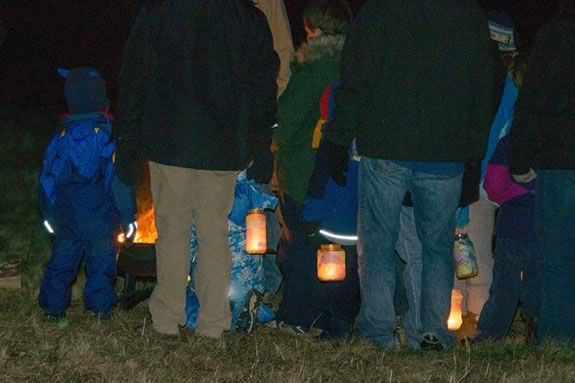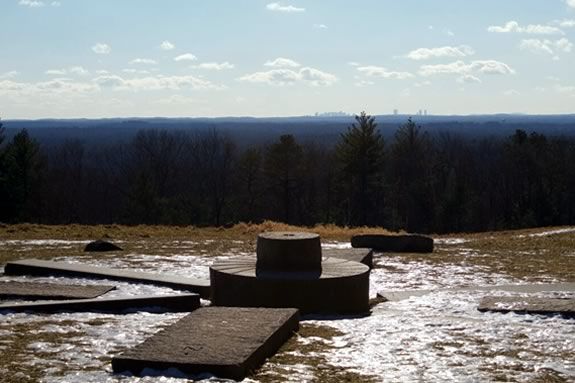ECGA Mutt Strut

An adventurous outing for you and your pup! Tompson Street has a little of everything: wooded trails, bridges across the swamp, rocky outcroppings…! The dogs and humans have a blast!

An adventurous outing for you and your pup! Tompson Street has a little of everything: wooded trails, bridges across the swamp, rocky outcroppings…! The dogs and humans have a blast!

Celebrate the shortest day of the year and welcome the lengthening days ahead with a candlelit evening walk on the trails of the Ipswich River Wildlife Sanctuary. The evening will begin by making your own mason jar lantern in our cozy, heated barn while sanctuary naturalists share the science of the solstice. With your own lantern in hand, we'll light up the night with a stroll through the forest and perhaps catch sights or sounds of animal activity during the winter season.

There is almost nothing more peaceful than a evening walk at the Crane Estate, and we would like to invite your family to join us for a unique hiking experience. With the full moon rising over the Atlantic, we’ll start with a sunset stroll along Crane Beach admiring this spectacle before heading into the dunes to explore it’s trails under the light of the full moon. This is a great opportunity to get the kids outside, share the joys of nature at twillight, and bond with your family.

Start the year off outside with some fresh air. You may be familiar with Crane Beach, but have you ever visited the dune trails? The dunes of Castle Neck are a much less explored world unto themselves. Offering one of the most accessible dune ecosystems north of Cape Cod, Castle Neck has over six miles of trails, traversing the dunes, maritime scrub forest, and beautiful beaches on both the Ipswich Bay and Essex/Castle Neck River estuary sides of the peninsula. These trails take you through Pitch Pine forests, up huge dunes offering stunning views of Choate Island, and by the varied landscapes of Castle Neck, including naturally occurring cranberry bogs.

The Explore! North Shore hiking series will get you outside and moving at some lesser explored Trustees properties across the Northeast Region, at the right time of year to see these special places shine. These beginner hikes will not be too strenuous, and will offer frequent stops for learning and taking in the beauty of our special places.

A CraneOutdoors Family Winter Wildlife Walk will take you on a stroll through the Crane Beach dunes while learning about the plants and animals that call this special place home. You may be familiar with Crane Beach, but have you ever visited the dune trails? The dunes of Castle Neck are a much less explored world unto themselves. They offer one of the most accessible dune landscapes in New England and trails that provide a firsthand look into the delicate and ever-changing dune habitat. This includes numerous lookouts offering stunning views of Choate Island and the varied ecosystems of Castle Neck, including Pitch Pine forests and naturally occurring cranberry bogs.

While just about everybody on the North Shore has probably been to Crane Beach, the dunes of Castle Neck are a much less explored world unto themselves. Offering one of the most accessible dune ecosystems north of Cape Cod, Castle Neck has over six miles of trails, traversing the dunes, maritime scrub forest, and beautiful beaches on both the Ipswich Bay and Essex/Castle Neck River estuary sides of the peninsula. These trails take you through Pitch Pine forests, up huge dunes offering stunning views of Choate Island, and by the varied landscapes of Castle Neck, including naturally occurring cranberry bogs.

The Trustees of Reservations invite you to tour the gardens at Long Hill Gardens in Beverly, Massachusetts to celebrate Autumn and Halloween! Long Hill is excited to bring back our annual Halloween on the Hill event! Come explore our beautiful property as we transform the Long Hill gardens into a celebration of autumn and the Halloween season. As always, there are a few new surprises and of course many more pumpkins this year. Follow our seasonal-themed trail that will feature over 1,500 jack-o'-lanterns, hundreds of mums, elaborate Halloween decorations, light displays, music, and more. This is the perfect Halloween event for the whole family!

Bring the family for a nature-themed Halloween at the Ipswich River Wildlife Sanctuary this October. This charming, not-so-spooky event invites visitors to take a hoot-i-ful woodland walk and learn about nocturnal (costumed) animals that live at the sanctuary.

Essex National Heritage Area sites will offer over 150 free family fun events from September 14-29, 2024 for the annual celebration of TRAILS & SAILS. Discover special places in your backyard and be guided through unique landscapes on land and sea, explore historic properties, and take in cultural experiences of all kinds. Find what makes Essex County like nowhere else during Trails & Sails! It’s all FREE and it’s all located within the 34 cities and towns of Essex County.